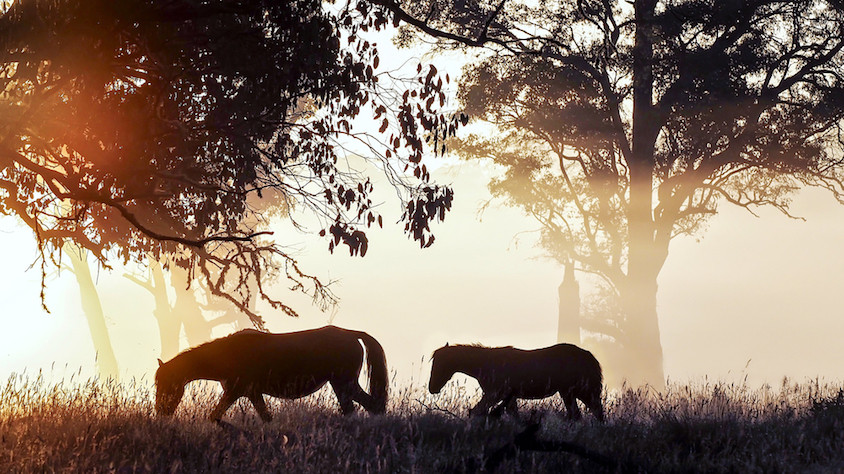Ongoing debate over the status of feral horses that live in Australia’s alpine regions (brumbies, as they’re often called) is heating up following the release of a new draft management plan from the NSW government.
Called the Kosciuszko National Park Draft Wild Horse Management Plan, the document has already undergone a protracted development process in consultation with communities and relevant stakeholders. However, the draft plan is currently up for public consultation, and people are encouraged to make a submission prior to the 8th of July this year.
The plan makes note of the impacts that feral horses are having on native alpine and subalpine ecosystems, citing trampling damage and other behaviours that are particularly bad for alpine bogs, waterways and drainage lines.
Other issues cited by the report include vehicle accidents caused by horses crossing roads in the park, the spread of some diseases and damage to huts and sites of Aboriginal cultural importance.
The National Parks and Wildlife Service has thereby proposed to work with the Department of Primary Industry and Local Land Services as well as local community groups to begin culling the horses’ numbers through primarily on-ground methods. These methods would generally entail fencing and mustering the animals to be shot, or in some cases to be considered for fertility control.
Announced by NSW environment minister Mark Speakman, the plan hopes to reduce feral horse numbers from 6,000 to 600 in 20 years without employing aerial shooting, brumby running and roping control methods.
“Wild horse management is an emotive and complex issue,” Speakman said “There are diverse opinions in the community and often deeply held views which polarise stakeholder groups.
“It is clear, however, that the broader community values the unique environmental values of Kosciuszko National Park and looks to the National Parks and Wildlife Service to protect these values.”
In the wake of the draft’s release, a number of community groups have come out against supporting the plans to cull ferals, citing concerns regarding the cultural significance of the animal and problems with the feasibility and background research of the plan itself.
Michelle Jenkins is owner of the Snowy Brumby Heritage Group, which supports a Facebook audience of more than 6,000 people.
“I find many of the claims made regarding the destruction caused by brumbies to be unsubstantiated, and without support of peer reviewed evidence I fail to see how these claims can be taken seriously.”
Jenkins also raises a concern regarding the ultimate population size the draft proposes, as “reducing the population size to just 600 horses is not viable”.
“With so few individuals the population will undergo a genetic bottleneck, reducing genetic viability and resulting in their eventual extinction.
“This attitude does not represent an acknowledgement of the horses’ significance in terms of our heritage, nor does it provide a long-term, sustainable solution.”
Chief executive of the National Parks Association of NSW (NPANSW), Kevin Evans has cited the importance of prioritising Australia’s native species above introduced species regardless of their charismatic nature.
“NPA believes that the rights of the native species in these regions are important, even more so when you consider how rare true alpine ecosystems are in this country as well as the fact that the total feral horse herd in Australia is estimated to be around one million strong.” Evans said.
“Efforts to protect alpine ecosystems from horse impacts will not result in the elimination of horses from Australia, but it is conceivable that a failure to manage horses will contribute to the extinction of native species.”
Evans goes further to point out that the draft management plan has avoided proposing “the most cost-effective, efficient and humane method of reducing numbers: aerial culling”.
“It’s distasteful to have to reduce the lives of animals to a dollar value, but budget realities are a major consideration for NPWS in an era of declining budgets. And, to be blunt, death is death no matter the method; the important thing is that there is a strong justification, as well as ethical and humane considerations taken into account.”


